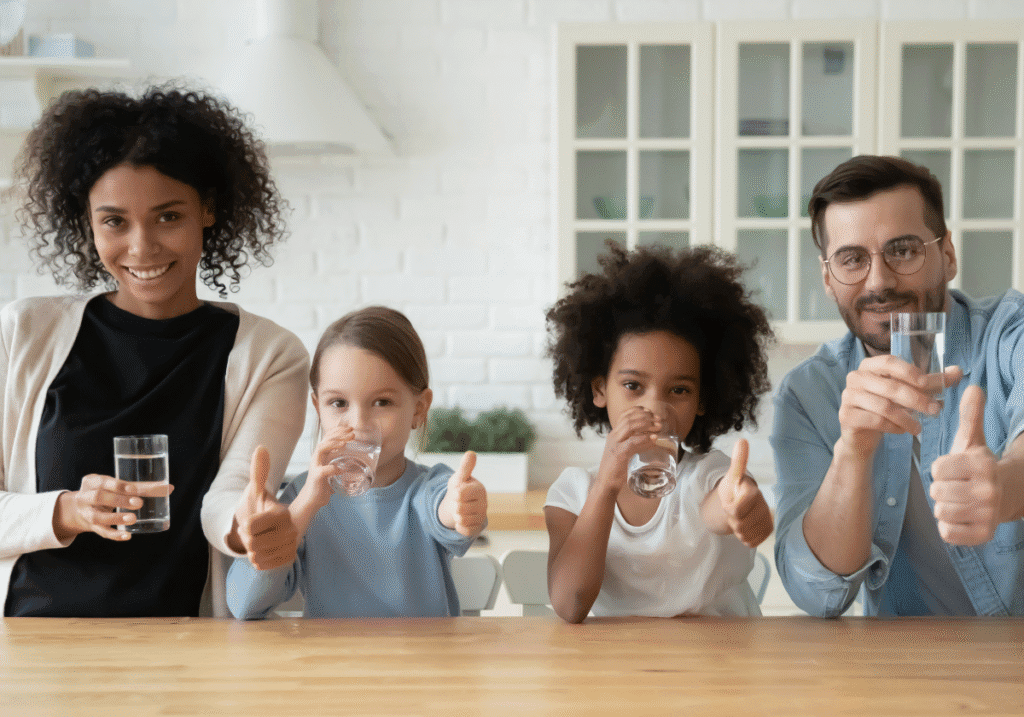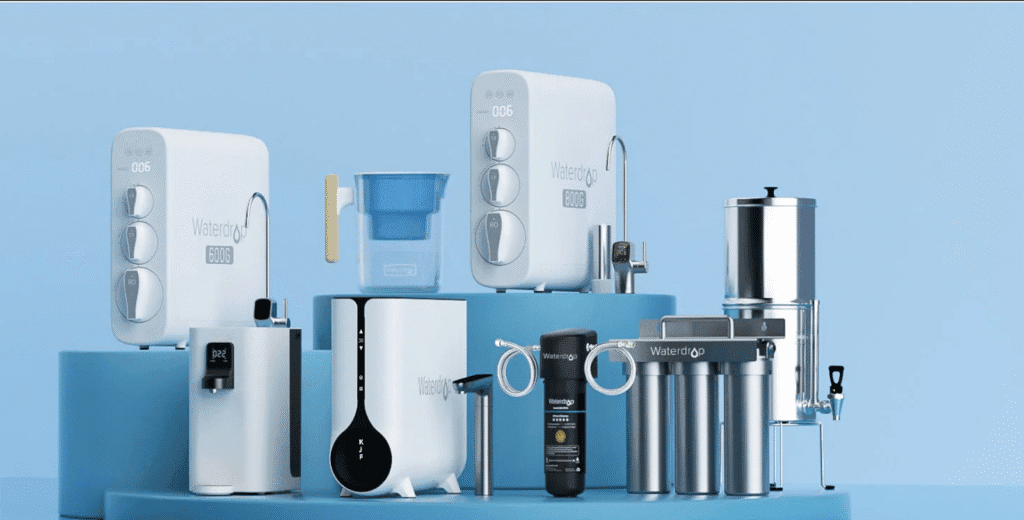Creating a zero-waste kitchen is no longer a niche trend. For many American households, it has become a practical lifestyle choice driven by rising environmental awareness, economic considerations, and a desire for healthier living.
Transitioning from disposable plastic bottles to purified tap water is one of the most impactful steps you can take in this journey. Not only does it reduce plastic waste, but it also improves the quality of the water your family consumes daily.
In this guide, we’ll walk through how you can shift from bottled water to cleaner, safer, and more sustainable tap water—powered by high-performance filtration systems.
Why Should Americans Move Away from Plastic Bottled Water?
1. Plastic Bottles Contribute to Environmental Waste
Americans purchase an estimated 50 billion plastic water bottles per year. Even with recycling programs, the majority still ends up in landfills or waterways. Choosing purified tap water can significantly cut your household’s contribution to plastic pollution.
2. Bottled Water Is More Expensive Than It Appears
A family of four can easily spend hundreds to thousands per year on bottled water. In contrast, a home filtration system—especially an under-sink RO system or a countertop filter—costs just a fraction over time.
3. Bottled Water Is Not Always Cleaner

Many people assume bottled water is inherently safer. But bottled water is often filtered municipal tap water. According to testing insights shared by Dr.Jonathan Doyle’s Texas laboratory, “Consumers are frequently surprised to learn that bottled water can contain residual contaminants that advanced filtration systems at home remove more effectively.”
This reinforces why switching to purified tap water is not only sustainable but also scientifically supported.
What Makes Purified Tap Water a Better Choice?
1. Consistent Access to Clean, Safe Water
Home filtration systems allow you to control your water quality at the point of use. This ensures consistent removal of contaminants like chlorine, lead, PFAS, microplastics, and volatile organic compounds.
2. Eliminates the Need for Disposable Bottles
Once the water coming from your faucet is reliably purified, you simply stop buying bottled water. Just pair your system with reusable bottles or glass containers.
3. Supports a Truly Zero-Waste Kitchen
Fewer bottles. Less packaging. More reusable materials. Once tap water becomes your main source of hydration, your kitchen naturally becomes more sustainable.
How Do You Transition Away from Plastic Bottles Step-by-Step?
Step 1: Analyze Your Household’s Water Habits

Determine:
- How much bottled water you consume weekly
- Whether you use bottles mostly for drinking, cooking, or travel
- What factors make bottled water more convenient for your family
This helps you pick the right filtration system later.
Step 2: Understand Your Tap Water Quality
Tap water quality varies across the U.S., depending on:
- Municipal treatment
- Local infrastructure
- Pipe age
- Regional contaminants
According to Dr. Doyle, “No two households have identical water conditions. That’s why proper filtration must address both common contaminants and region-specific pollutants.” His lab’s data has helped identify frequent contaminants found in American households, such as chlorine, high TDS levels, PFAS, and heavy metals.
Step 3: Choose the Right Filtration System
The key to a zero-waste kitchen is selecting a system that gives you complete confidence in your water. Modern solutions—like Waterdrop RO systems, provide:
- Multi-stage filtration
- Reverse osmosis purification
- Faster flow rates
- Compact designs suitable for any kitchen

These systems eliminate the need for cases of plastic bottles taking up pantry space.
Step 4: Phase Out Plastic Water Purchases
Instead of quitting bottled water overnight, gradually reduce purchases:
- Stop buying large multi-packs
- Use filtered tap water for cooking
- Shift to reusable bottles for travel
- Introduce filtered water pitchers in the fridge for guests
Within a few weeks, bottled water will naturally disappear from your routine.
Step 5: Build Zero-Waste Habits Around Water Usage
A sustainable kitchen is part practice, part mindset:
- Refill stainless steel or glass bottles
- Replace disposable filters with long-lasting ones when possible
- Use leftover purified water for plants
- Encourage family members to carry reusable containers
- Reduce reliance on single-use plastics in other kitchen areas
Each small step compounds into meaningful environmental progress.
What Kind of Filtration System Works Best for a Zero-Waste Kitchen?
Different households have different needs. Here are the most effective options:

1. Under-Sink Reverse Osmosis (RO) Systems
Great for families focused on maximum contaminant removal.
Benefits include:
- Removes up to 99% of contaminants
- Provides clean water directly from a dedicated faucet
- Reduces chlorine, PFAS, lead, and more
A popular example is a Waterdrop under-sink RO system, known for strong filtration performance with compact, tankless designs that save kitchen space.
2. Countertop Filtration Systems
Perfect for renters or anyone wanting an installation-free option.
These systems:
- Provide high-quality filtration
- Plug directly into your faucet
- Offer portable convenience
- Eliminate bottled water without modifying plumbing
Countertop RO systems deliver strong filtration without a long-term commitment or complex installation.
How Does Purified Tap Water Support a Zero-Waste Lifestyle Beyond Drinking?
Going beyond hydration, purified tap water offers additional benefits:
1. Better for Cooking
Meals taste fresher and cleaner. Chlorine and sediment can cause off-flavors in rice, pasta, soups, teas, and coffee.
2. Protects Kitchen Appliances
Filtered water reduces scale buildup in:
- Electric kettles
- Coffee machines
- Ice makers
- Water boilers
This extends appliance life and reduces waste from replacements.
3. Improves Reusable Container Lifespan
Clean water prevents mineral buildup on:
- Stainless-steel bottles
- Reusable cups
- Pitchers
- Food storage containers
This keeps your zero-waste tools in better condition longer.
How to Maintain Your Zero-Waste Kitchen for the Long Term
Consistency matters. Maintain your transformation by:
- Monitoring filter lifespan
- Staying aware of local water quality updates
- Replacing disposable items with reusable alternatives
- Educating family members on sustainable water habits
A zero-waste kitchen evolves naturally once purified tap water becomes your default choice.
Conclusion: A Cleaner, More Sustainable Kitchen Starts with Your Water
Transitioning from plastic bottled water to purified tap water is one of the simplest and most impactful changes you can make at home.
With expert guidance from professionals like Dr. Jonathan Doyle—whose decades of research and hands-on laboratory experience support consumer filtration choices—you can feel confident that this shift is both scientifically sound and environmentally responsible.
Start with your water, and your kitchen will follow. Cleaner, healthier, and far closer to zero waste.



